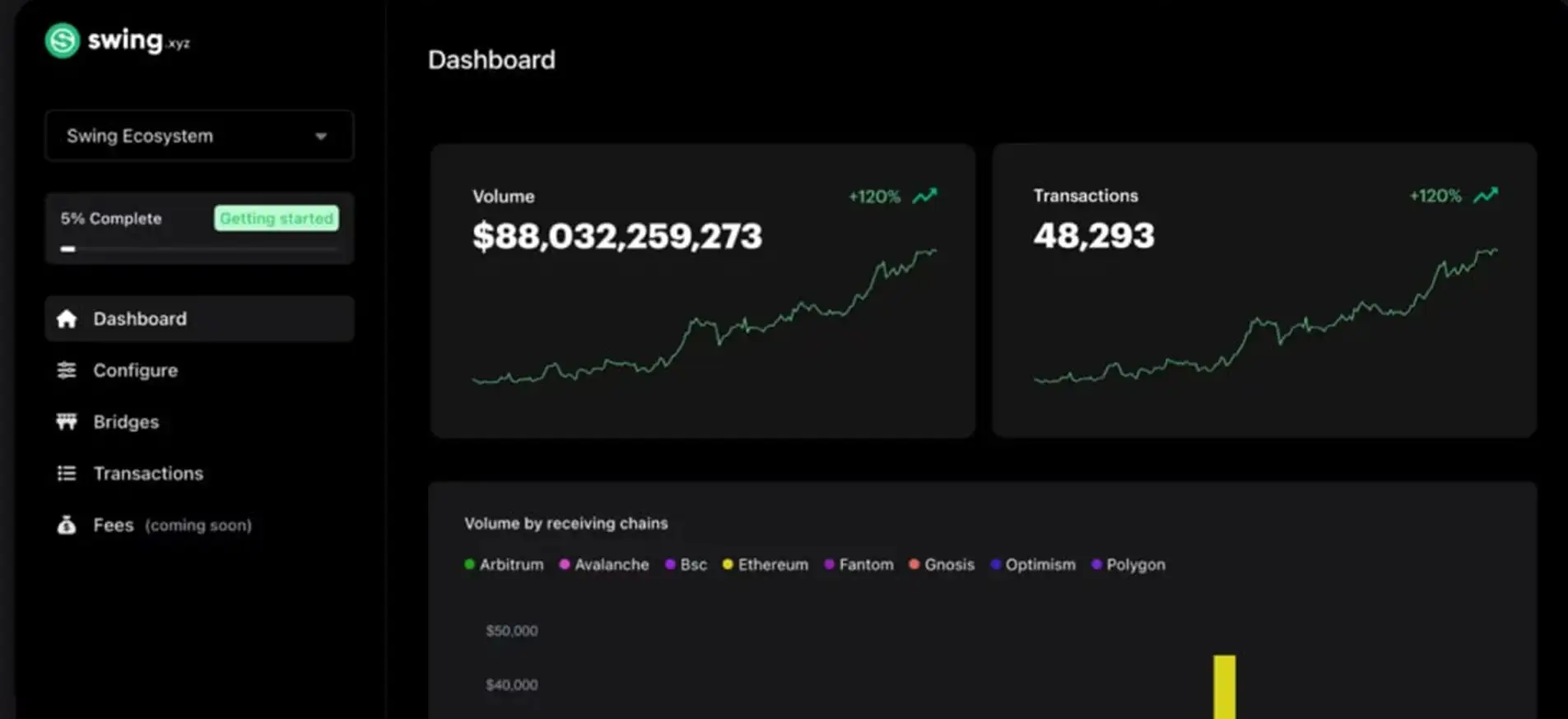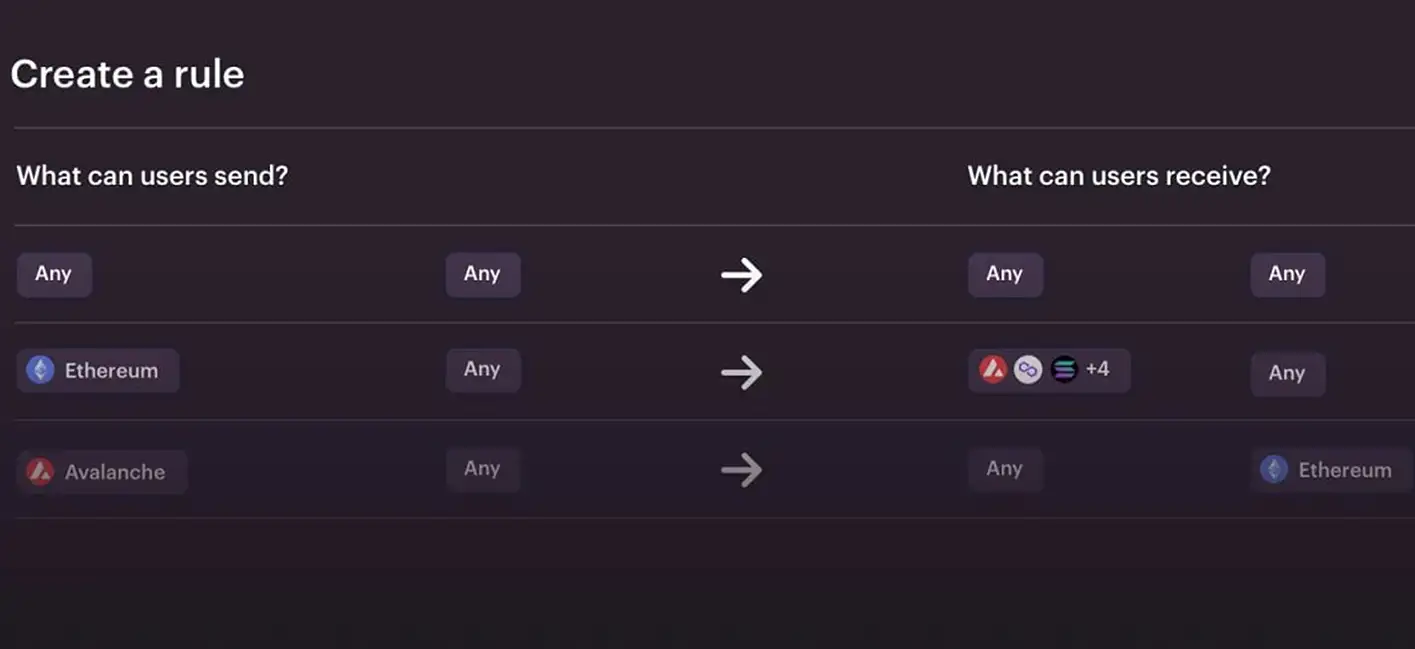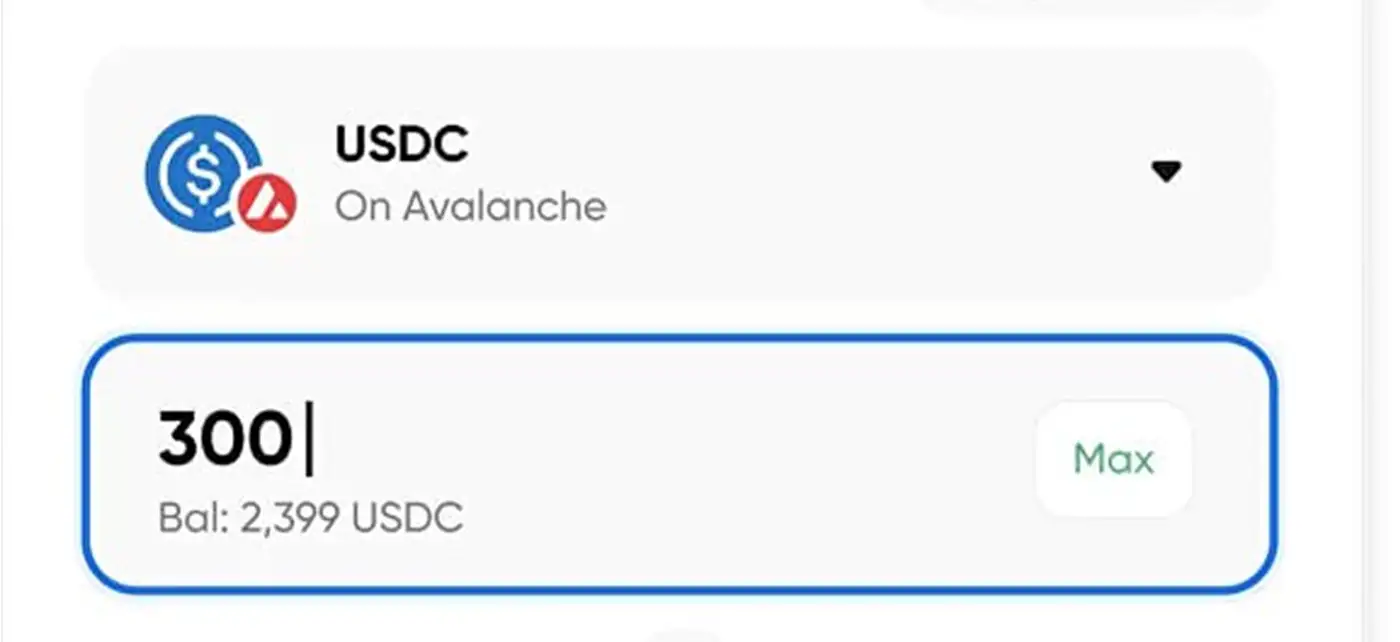About Swing
Swing is a pioneering platform in the realm of cross-chain liquidity and bridge aggregation, designed to address the growing need for seamless interoperability across various blockchain networks. As the blockchain ecosystem expands, with numerous chains offering unique features and benefits, the challenge of moving assets between these chains has become increasingly complex. Swing provides a solution by enabling developers to integrate cross-chain functionalities into their decentralized applications (dApps) with ease, fostering a more connected and efficient blockchain environment.
At its core, Swing aims to simplify the development process for blockchain applications by offering a unified platform that connects over 51 different blockchains, including major networks like Ethereum, Binance Smart Chain, and Polkadot. This vast connectivity allows developers to access liquidity across a wide array of chains and protocols, ensuring that their users can benefit from the best rates available for asset transfers, swaps, and staking activities. The platform's focus on interoperability helps bridge the gap between isolated blockchain networks, creating a more cohesive and accessible ecosystem for developers and users alike.
The mission of Swing extends beyond just providing tools; it is about empowering developers to build the future of decentralized finance (DeFi) with minimal friction. By offering a range of APIs, SDKs, and customizable widgets, Swing allows developers to integrate sophisticated cross-chain functionalities without needing extensive coding knowledge. This developer-centric approach not only accelerates the development process but also ensures that dApps built on Swing are scalable, secure, and capable of meeting the demands of a rapidly evolving market. As blockchain technology continues to advance, Swing stands at the forefront, enabling the next generation of dApps to be more interconnected and user-friendly.
Swing provides a comprehensive set of tools designed to facilitate cross-chain liquidity routing. The platform connects over 51 blockchains, including major networks such as Ethereum, Binance Smart Chain, and Polkadot, along with more than 100 bridges, decentralized exchanges (DEXes), and DeFi protocols. This extensive network allows Swing to offer robust liquidity aggregation, ensuring that users can access the best possible rates when transferring assets between chains.
One of Swing's core features is its developer-first approach. Recognizing the complexities involved in integrating multiple blockchains, Swing offers a range of tools, including easy-to-integrate SDKs and APIs, which significantly reduce the development time and effort required to add cross-chain functionalities to dApps. Additionally, developers can deploy customizable widgets that allow for quick and seamless implementation of swapping, bridging, and staking features. These widgets are designed to be easily configurable, enabling developers to tailor them to their specific needs without requiring extensive coding.
Security is a critical consideration in cross-chain transactions, and Swing places a strong emphasis on this aspect. The platform incorporates built-in security features to manage bridge security and ensure compliance across various chains. This focus on security is particularly important given the rise of cross-chain vulnerabilities, which have been exploited in several high-profile incidents within the DeFi space. Swing's comprehensive security measures help mitigate these risks, providing a safer environment for both developers and end-users.
Swing also offers real-time monitoring capabilities, allowing developers to track transactions, revenue, and other key metrics through comprehensive dashboards. This feature is invaluable for optimizing dApp performance and ensuring smooth operation across multiple chains. By providing detailed insights into cross-chain activities, Swing empowers developers to make data-driven decisions that enhance the user experience and improve overall efficiency.
In terms of competition, Swing is positioned alongside other cross-chain solutions such as Uniswap, which offers similar bridge aggregation services, and Thorchain, a decentralized liquidity network that facilitates cross-chain trading. These platforms also focus on enabling interoperability between different blockchains, but Swing differentiates itself through its developer-centric approach, customizable tools, and comprehensive security features.
- Cross-Chain Liquidity Aggregation: Swing aggregates liquidity across multiple chains and protocols, ensuring users access the best rates for asset transfers.
- Developer-Friendly Tools: Offers easy-to-integrate SDKs and APIs, allowing developers to add cross-chain features with minimal coding effort, reducing development time and complexity.
- Customizable Widgets: Developers can quickly deploy and configure customizable widgets for swapping, bridging, and staking, tailored to their specific project needs.
- Security and Compliance: Swing includes built-in features to manage bridge security and ensure compliance across various chains, reducing the risks associated with cross-chain transactions.
- Real-Time Monitoring: Comprehensive dashboards provide real-time monitoring of transactions, revenue, and key metrics, enabling developers to optimize performance and enhance the user experience.
- Extensive Blockchain Support: With support for over 51 blockchains and connections to more than 100 bridges, DEXes, and DeFi protocols, Swing offers unparalleled reach and flexibility for cross-chain operations.
Getting started with Swing is a straightforward process that empowers developers to quickly integrate cross-chain functionalities into their dApps. Follow these steps to begin:
- Create an Account: Visit the Swing website and sign up for an account to gain access to the platform's development tools.
- Explore Documentation: Navigate to the developer portal for detailed guides on using the Swing API, SDK, and widgets. This documentation provides step-by-step instructions to help you understand the integration process.
- Choose Your Integration: Decide whether to use Swing's API, SDK, or customizable widgets based on your project's specific needs. Each option offers different levels of customization and ease of integration.
- Configure Your dApp: Utilize the Swing dashboard to configure chains, tokens, and bridges. The dashboard allows you to manage your dApp's cross-chain operations without needing to write additional code.
- Launch Your dApp: Once your dApp is configured, deploy it with full cross-chain capabilities. Monitor its performance and transactions using Swing's real-time metrics dashboard, ensuring everything runs smoothly.
Swing Reviews by Real Users
Swing FAQ
Swing incorporates built-in security features that manage bridge security and ensure compliance across various chains. By leveraging its extensive network of connections, Swing constantly monitors for vulnerabilities, applying the latest security protocols to safeguard user assets during cross-chain transactions. This approach minimizes risks commonly associated with cross-chain activities.
Yes, Swing offers customizable widgets that can be tailored to fit the specific needs of your dApp. These widgets are designed for easy integration, allowing you to adjust features such as swapping, bridging, and staking without extensive coding. You can deploy these widgets quickly, ensuring your dApp meets your users' requirements while maintaining flexibility.
Swing's platform is designed with a developer-first approach, offering easy-to-integrate SDKs and APIs that simplify the process of adding cross-chain functionalities. The platform’s extensive developer portal provides comprehensive guides and resources, helping even those with limited experience implement advanced cross-chain features with ease.
Swing differentiates itself through its focus on developer-centric tools and its extensive network of supported blockchains and bridges. While competitors like AnySwap and Thorchain also offer cross-chain services, Swing provides more flexibility with its customizable widgets and real-time monitoring features, making it a preferred choice for developers looking to build scalable and secure dApps.
Swing offers real-time monitoring through its comprehensive dashboards, which track transactions, revenue, and other key metrics. These tools allow you to optimize your dApp's performance across multiple chains, ensuring smooth operation and a high-quality user experience. This monitoring capability is particularly useful for maintaining the efficiency and security of your cross-chain operations.
You Might Also Like












